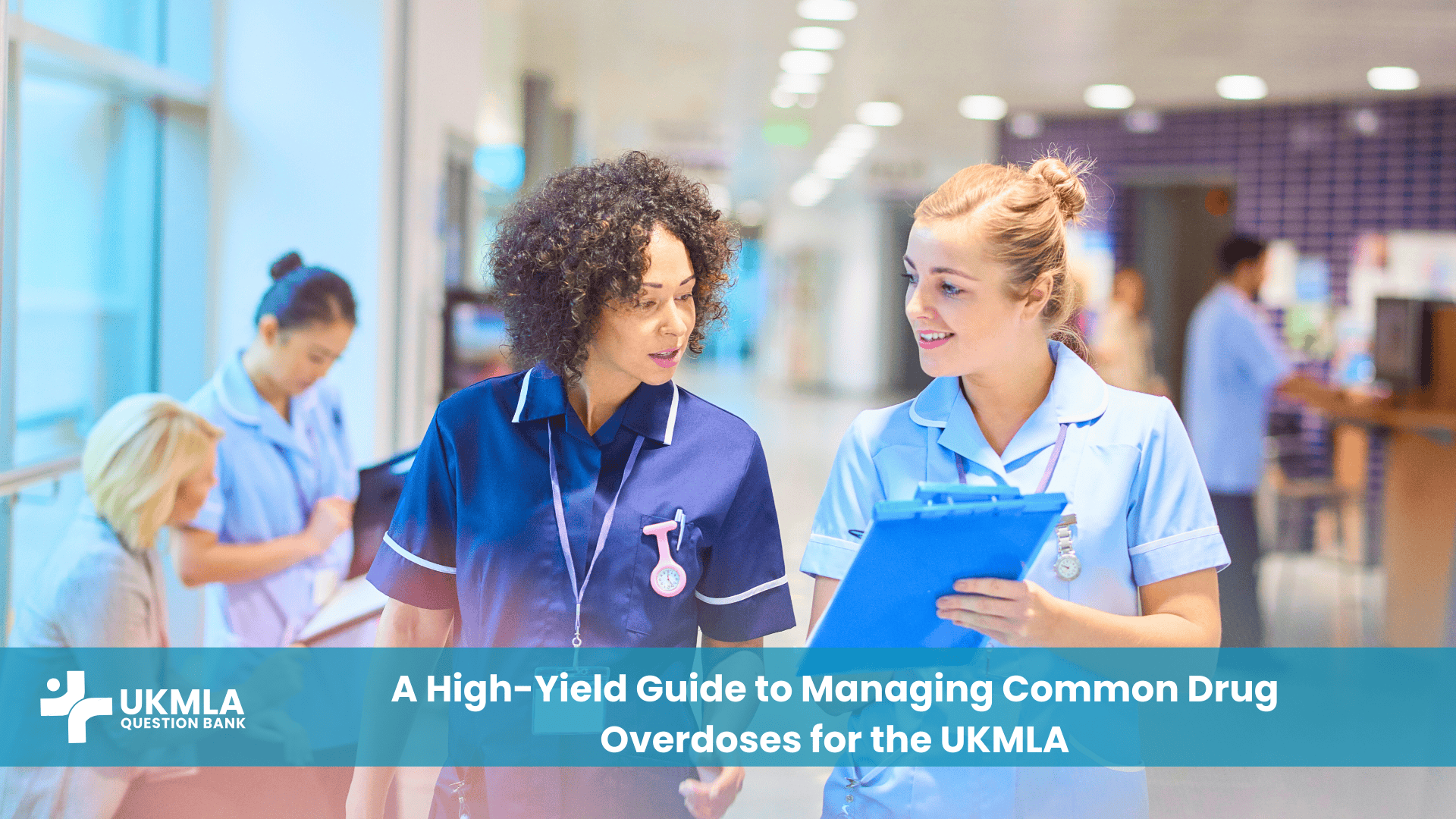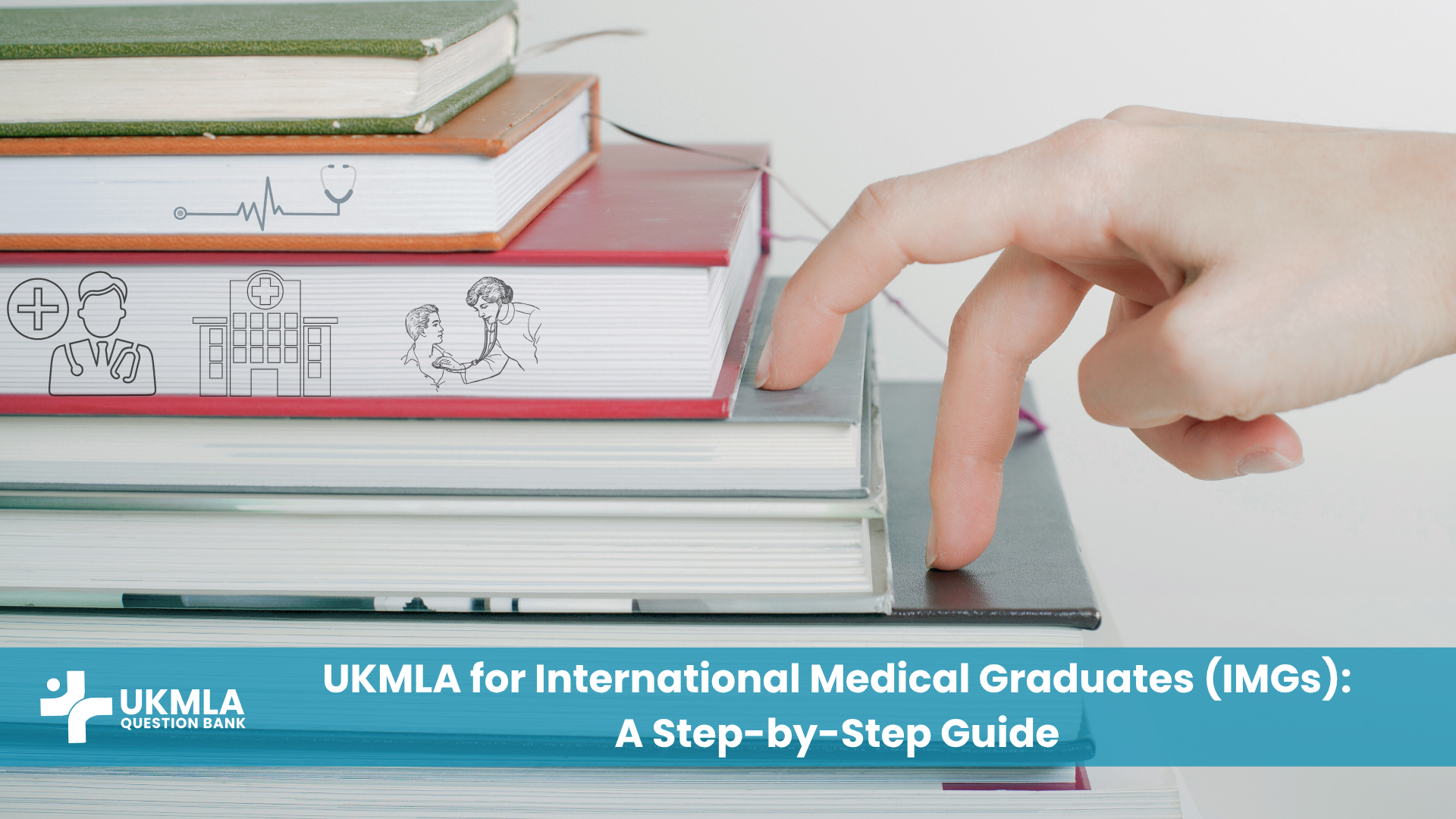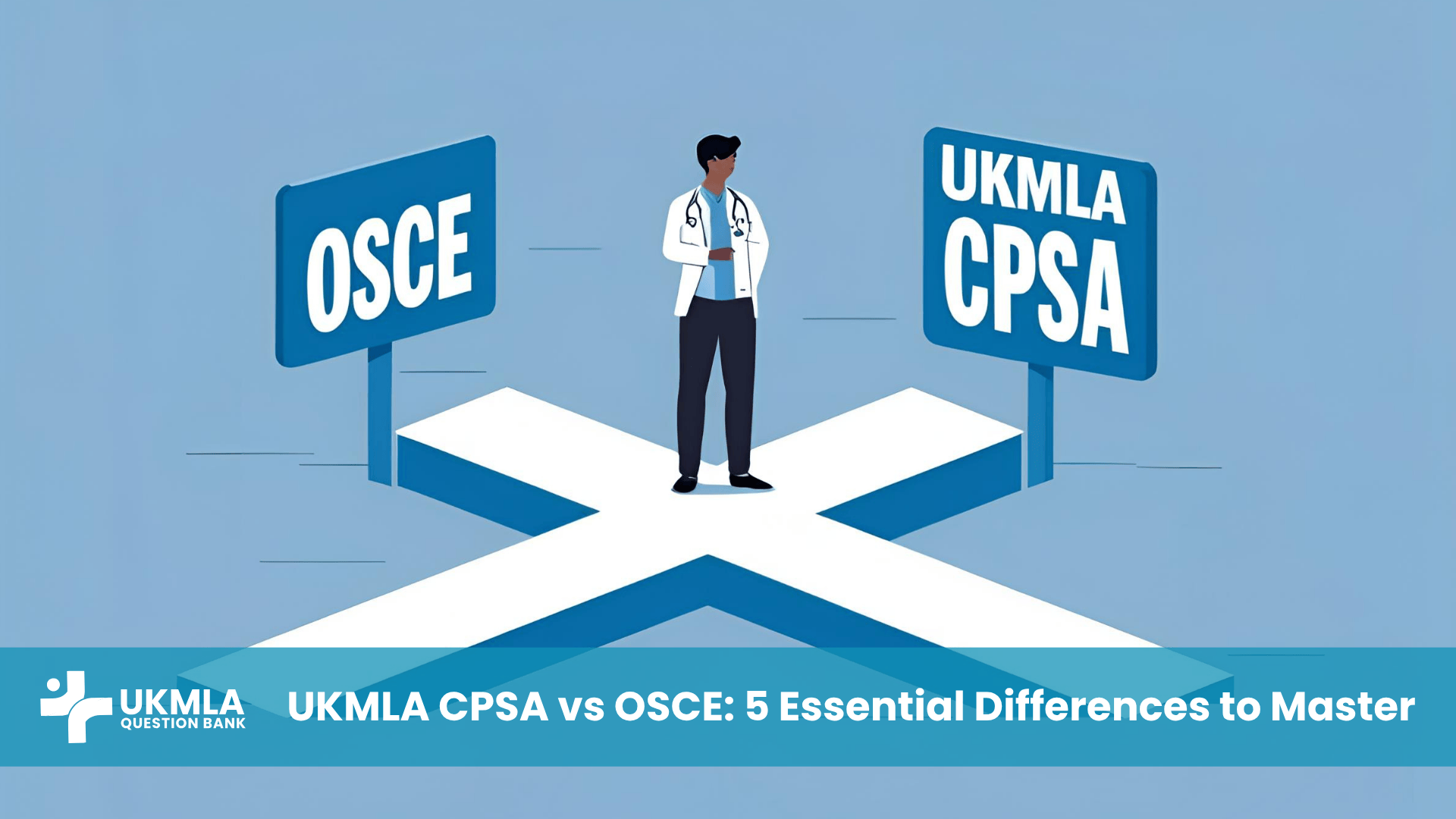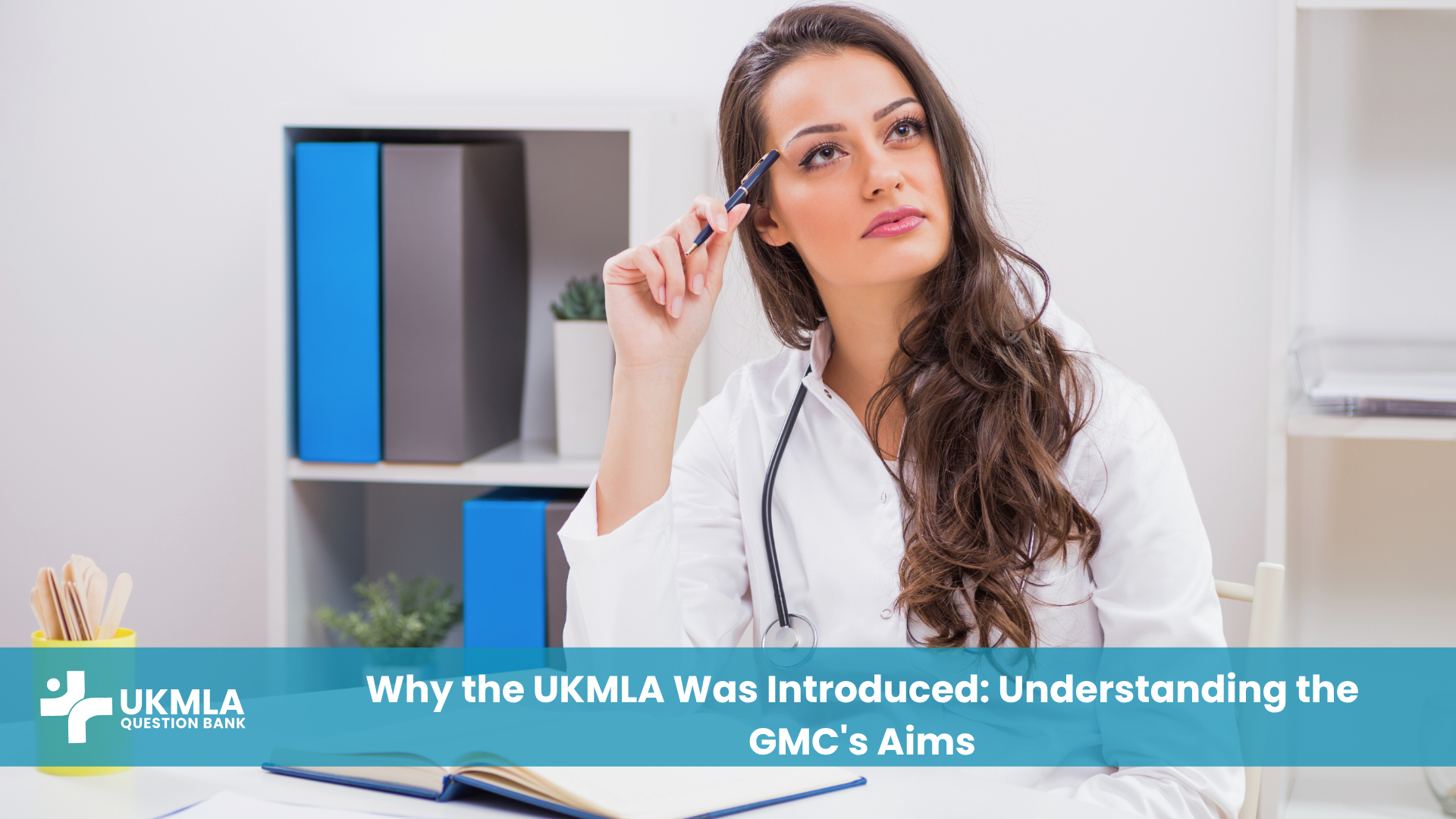Introduction
Managing common drug overdoses UKMLA candidates will face is one of the most critical skills in emergency medicine, testing your ability to think clearly under pressure, apply pharmacological principles, and initiate life-saving interventions. Whether in a high-stakes AKT vignette or a challenging CPSA station, your understanding of toxicology can be the difference between a pass and a fail, and more importantly, between a good and a poor patient outcome. This post is designed to be your blueprint for success, breaking down the complexities of toxicology into a clear and memorable framework, providing a comprehensive guide to success.
We will navigate the core principles of managing a poisoned patient, from the initial A-to-E assessment to the nuanced art of toxidrome recognition. We will then take a deep dive into the most frequently encountered overdoses—including paracetamol, opioids, and tricyclic antidepressants—outlining their specific management pathways and the crucial antidotes you must know. Finally, we’ll synthesise this knowledge into a practical framework for tackling the UKMLA exam format, ensuring you can apply what you’ve learned when it matters most.
Table of Contents
ToggleCore Principles of Toxidrome Management
Before diving into specific drugs, it’s essential to have a robust, systematic approach to any patient with a suspected overdose. Rote learning antidotes is not enough; you must be able to stabilise the patient first.
The A-to-E Approach in a Poisoned Patient
The absolute priority in any emergency is the A-to-E assessment. A patient’s specific poison is irrelevant if their airway is compromised. This is one of the key emergency medicine essentials for the UKMLA.
A – Airway: Is the airway patent? GCS below 8 (“less than eight, intubate”) is a classic indication for securing the airway, especially in patients with CNS depression from sedatives or opioids.
B – Breathing: Assess respiratory rate, oxygen saturation, and work of breathing. Opioids famously cause respiratory depression, while salicylates can cause hyperventilation. Provide oxygen as needed.
C – Circulation: Check blood pressure, heart rate, and capillary refill. Many drugs have profound cardiovascular effects. Establish IV access early for fluids and medications.
D – Disability: Assess consciousness level using the Glasgow Coma Scale (GCS) or AVPU. Check pupil size and reactivity—a vital clue in toxicology. Also, always check a blood glucose level.
E – Exposure: Fully expose the patient to look for pill packets, needles, patches, or signs of trauma. Maintain patient dignity and prevent hypothermia.
History Taking and Using Collateral Information
A good history is the cornerstone of diagnosis. If the patient is uncooperative or unconscious, you must become a detective. Ask paramedics about the scene, speak to family and friends about the patient’s medications, psychiatric history, and any recent events. The slogan “treat the patient, not the poison” is paramount, but identifying the substance is key to targeted therapy.
Understanding Toxidromes: The Key to Diagnosis
A toxidrome is a collection of signs and symptoms that consistently occur with a specific class of poison. Recognising these patterns can narrow your differential diagnosis significantly, even before lab results are back.
Blockquote: “The toxidrome approach allows the clinician to categorise a poisoned patient by their physiological state. This is crucial for initiating empirical treatment while awaiting definitive toxicological analysis.”
Table 1: Common Toxidromes
| Toxidrome | Mental Status | Pupils | Heart Rate | Other Key Signs | Common Causes |
|---|---|---|---|---|---|
| Opioid | Depressed | Constricted (Pinpoint) | Bradycardia | Resp. Depression, Low Temp | Heroin, Morphine, Codeine |
| Sympathomimetic | Agitated | Dilated | Tachycardia | Diaphoresis, Hyperthermia | Cocaine, Amphetamines |
| Anticholinergic | Agitated, Confused | Dilated | Tachycardia | Dry Skin/Mucosa, Urinary Retention | TCAs, Atropine, Antihistamines |
| Cholinergic | Confused, Coma | Constricted | Bradycardia | Salivation, Lacrimation, Urination, Defecation (SLUDGE) | Organophosphates, Nerve Agents |
Decontamination and Enhanced Elimination
Once the patient is stabilised, consider whether you can reduce absorption or increase the elimination of the poison.
Activated Charcoal: The use of activated charcoal is now very limited. It is only effective if given within one hour of ingestion of a substance known to be adsorbed by it, and only if the patient’s airway is secure. It is contraindicated for substances like metals, alcohols, and corrosives.
Enhanced Elimination: For certain toxins, we can actively speed up their removal from the body. Urinary alkalinisation with sodium bicarbonate is a key example used in salicylate poisoning. For severe toxicity with drugs like salicylates, lithium, or ethylene glycol, haemodialysis may be a life-saving intervention.
The Top 7 High-Yield Overdoses and Their Specific Management
While there are countless potential poisons, the UKMLA will focus on common and clinically significant overdoses. Master these, and you’ll be well-prepared with your knowledge of high-yield pharmacology for the UKMLA.
Paracetamol Overdose: The Four-Hour Rule and N-acetylcysteine (NAC)
Paracetamol is the most common overdose in the UK. Its toxic metabolite, NAPQI, depletes glutathione stores in the liver, leading to hepatocellular necrosis. Management is time-critical. If a patient presents within 4 hours of a single acute ingestion, take a serum paracetamol level at the 4-hour mark (or later). Plot this level on the Rumack-Matthew nomogram to determine the need for the antidote, N-acetylcysteine (NAC). According to the official NICE CKS guidance on Paracetamol Poisoning, any patient presenting after 8 hours or where there is any doubt about the timing or nature of ingestion should be started on NAC immediately.
Opioid Overdose: Recognising the Triad and Using Naloxone
The opioid toxidrome is classic: respiratory depression, pinpoint pupils, and CNS depression. Management is focused on supporting breathing and administering the competitive opioid antagonist, naloxone. The goal is not to fully wake the patient up but to restore adequate ventilation. Start with small doses (e.g., 400 micrograms IV) and titrate to effect. Be aware that naloxone has a short half-life, and patients may re-narcotise, often requiring an infusion.
Tricyclic Antidepressant (TCA) Overdose: ECG Changes and Bicarbonate
TCA overdose is life-threatening due to its cardiotoxic effects. TCAs block fast sodium channels in the heart, leading to a broad QRS complex (>100ms) and a tall R wave in aVR. This can precipitate ventricular arrhythmias and seizures. The cornerstone of management for cardiotoxicity is IV sodium bicarbonate, which helps to overcome the sodium channel blockade. This is a key part of the essential cardiology knowledge for the UKMLA.
Salicylate (Aspirin) Overdose: Metabolic Acidosis and Urinary Alkalinisation
Salicylate poisoning causes a mixed respiratory alkalosis and metabolic acidosis. Patients present with hyperventilation, tinnitus, and sweating. The key management goals are to correct the acidosis and enhance elimination. This is achieved through urinary alkalinisation with an IV sodium bicarbonate infusion, which traps the salicylate in the renal tubules for excretion. In severe cases, haemodialysis is required.
Benzodiazepine Overdose: Supportive Care and the Role of Flumazenil
Isolated benzodiazepine overdose is rarely fatal. Patients are typically very drowsy but maintain their airway and breathing. Management is almost always supportive care. The antidote, flumazenil, is rarely used. It can precipitate seizures in patients with a mixed overdose (e.g., with TCAs) or in chronic benzodiazepine users, making the situation far more dangerous.
Beta-Blocker Overdose: Bradycardia, Hypotension, and Glucagon
Beta-blockers (e.g., bisoprolol, propranolol) cause bradycardia and hypotension by blocking beta-adrenergic receptors. In overdose, this can lead to profound shock and cardiogenic pulmonary oedema. Standard treatments like atropine and fluids are often insufficient. The specific antidote is high-dose glucagon, which bypasses the beta-receptors and directly increases intracellular cAMP, improving heart rate and contractility.
Ethylene Glycol (Antifreeze) Poisoning: HAGMA and Fomepizole
Ethylene glycol itself is not toxic, but its metabolites are. They cause a severe high anion gap metabolic acidosis (HAGMA) and form calcium oxalate crystals that deposit in the renal tubules, causing acute kidney injury. The key to management is blocking the enzyme alcohol dehydrogenase. The specific antidote is fomepizole, or alternatively, ethanol, which acts as a competitive substrate for the enzyme.
Table 2: High-Yield Overdose Summary
| Overdose | Key Feature | Antidote/Key Treatment |
|---|---|---|
| Paracetamol | Hepatotoxicity (delayed) | N-acetylcysteine (NAC) |
| Opioids | Respiratory Depression | Naloxone |
| TCAs | Wide QRS, Arrhythmias | Sodium Bicarbonate |
| Salicylates | Mixed Acid-Base Disorder | Urinary Alkalinisation, Dialysis |
| Benzodiazepines | Sedation | Supportive Care (Flumazenil rarely used) |
| Beta-Blockers | Bradycardia, Hypotension | High-Dose Glucagon |
| Ethylene Glycol | High Anion Gap Metabolic Acidosis | Fomepizole |
A Framework for Managing Common Drug Overdoses UKMLA Scenarios
Knowledge is only useful if you can apply it under exam conditions. Here’s how to structure your thinking for the AKT and CPSA.
Essential Investigations and When to Order Them
For any suspected overdose, a standard set of investigations is crucial. A deep understanding of these is covered in the guide to UK blood tests and lab values for the UKMLA.
Venous Blood Gas (VBG): Provides a quick look at pH, lactate, and electrolytes.
Paracetamol & Salicylate Levels: Order these on ALL intentional overdose patients, as co-ingestion is common and can be asymptomatic initially.
ECG: Essential for detecting cardiotoxicity, particularly with TCAs and some beta-blockers.
Core Bloods: Urea & Electrolytes (for kidney function, crucial for drug clearance), and Liver Function Tests (to baseline for hepatotoxicity).
Blockquote: The General Medical Council’s guidance on Good practice in prescribing and managing medicines states, “You must be competent in assessing the patient’s condition, relevant medical history, and the effects of any medicines they are taking before prescribing.” This principle extends to managing the consequences of those medicines in overdose.
Deconstructing an AKT Question: A Worked Example
A 24-year-old woman is brought to the emergency department after being found with an empty box of amitriptyline. She is drowsy with a GCS of 11. Her heart rate is 130 bpm, BP is 95/60 mmHg. Her ECG shows a sinus tachycardia with a QRS duration of 140ms.
What is the most important immediate management step?
Administer IV naloxone
Administer IV N-acetylcysteine
Administer IV sodium bicarbonate
Arrange for urgent haemodialysis
Perform a gastric lavage
Breakdown: The history points to a TCA overdose (amitriptyline). The key finding is the wide QRS (140ms), indicating cardiotoxicity. The most important immediate step to prevent arrhythmia is to administer IV sodium bicarbonate. This is a classic example of how to tackle SBA questions effectively. This makes option 3 the correct answer.
Communication in the CPSA: Explaining Management to Patients and Relatives
In a CPSA station, you may need to explain a patient’s condition and treatment to a concerned relative. This involves managing one of the many challenging scenarios in the UKMLA CPSA. Use a simple structure like the SPIKES framework:
S – Setting: Ensure privacy and sit down. “Thank you for coming in. My name is Dr. [X]. Shall we talk in this quiet room?”
P – Perception: Ask what they already know. “Before I explain what’s happening, could you tell me what you understand so far?”
I – Invitation: Ask permission to share information. “Would it be okay for me to explain what we’ve found and what our plan is?”
K – Knowledge: Give a warning shot, then explain clearly. “I’m afraid the situation is very serious. Your daughter has taken an overdose of her tablets, which is making her very unwell.”
E – Emotions: Respond with empathy. “I can see this is a huge shock. It’s completely understandable to feel overwhelmed right now.”
S – Strategy & Summary: Outline the plan. “Our priority is to support her breathing and circulation. We’ve put a drip in her arm to give her fluids and a specific antidote. We will be monitoring her very closely.”
Frequently Asked Questions (FAQ) about Common Drug Overdoses
The first step is always the A-to-E assessment to identify and treat any immediate life threats to the patient’s airway, breathing, and circulation.
For a single acute ingestion, a plasma paracetamol level should be taken at 4 hours post-ingestion or as soon as possible thereafter if the patient presents late.
The goal is to reverse respiratory depression without causing a sudden, complete reversal of analgesia, which can precipitate acute withdrawal, aggression, and vomiting in a dependent patient.
Sinus tachycardia, a wide QRS complex (>100ms), and a tall R wave in lead aVR are the hallmark signs of cardiotoxicity.
Its use has become much less frequent. It is only effective if given within one hour of ingestion of a substance known to be adsorbed by charcoal, and it cannot be used if the patient has a compromised airway.
Administering IV sodium bicarbonate makes the urine more alkaline. This traps the acidic salicylate molecules in their ionised form within the renal tubules, preventing reabsorption and promoting excretion.
No, the nomogram is only validated for single acute ingestions. All patients with a staggered overdose or where the timing is uncertain should be treated with N-acetylcysteine.
In patients who are chronic benzodiazepine users or who have co-ingested a pro-convulsant drug like a TCA, flumazenil can precipitate life-threatening seizures.
The primary antidote is high-dose glucagon. In refractory cases, high-dose insulin euglycaemic therapy (HIET) may also be used under specialist guidance.
After immediate medical stabilisation, all patients who have intentionally self-harmed require a compassionate and thorough psychiatric assessment to address the underlying distress and reduce the risk of future episodes.
Conclusion
Mastering the approach to common drug overdoses is a non-negotiable skill for any doctor in the UK. By anchoring your knowledge in the A-to-E framework, learning to recognise key toxidromes, and memorising the management of a few high-yield poisons, you build a powerful and resilient clinical toolkit. This structured approach not only prepares you for the specific challenges of the UKMLA but also lays the foundation for safe and effective practice on the wards, as outlined in this ultimate 6-month UKMLA study plan.
Remember that behind every toxicology case is a person in crisis. The ultimate goal of managing common drug overdoses UKMLA style is not just to correct a physiological imbalance, but to provide compassionate, holistic care that addresses both the poison and the person. Keep that principle at the heart of your revision and your future practice, and you will be well on your way to success.



